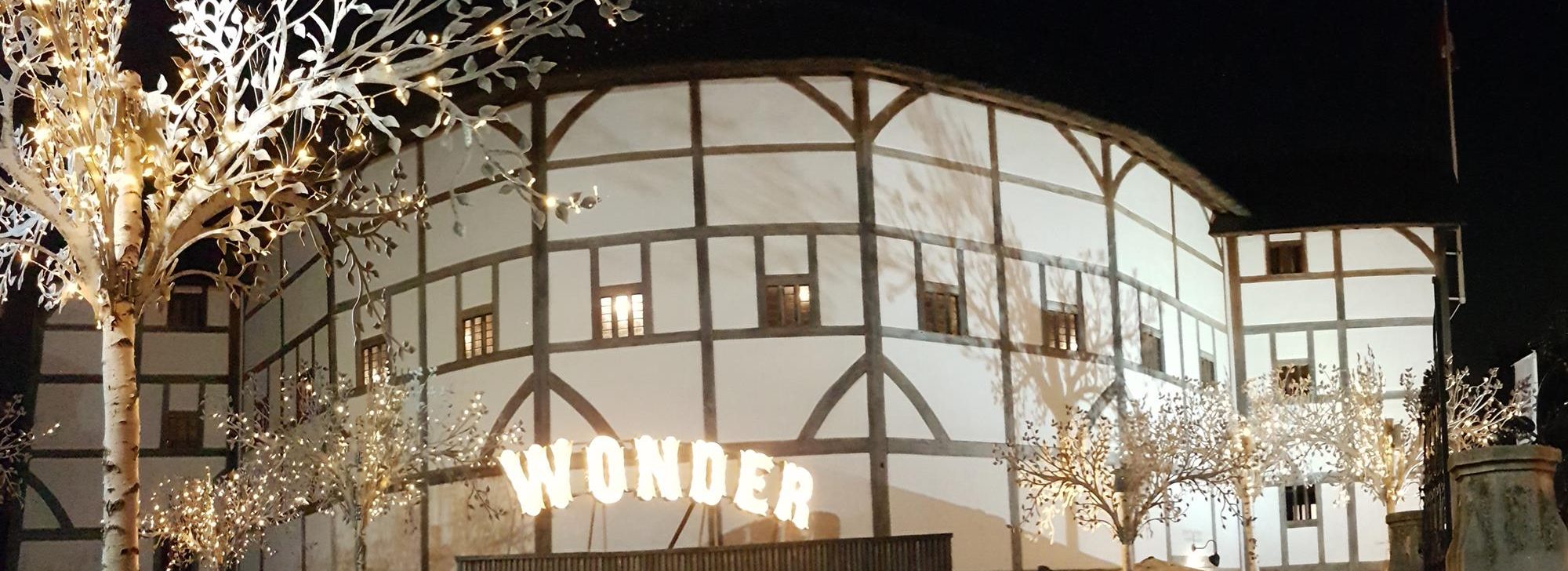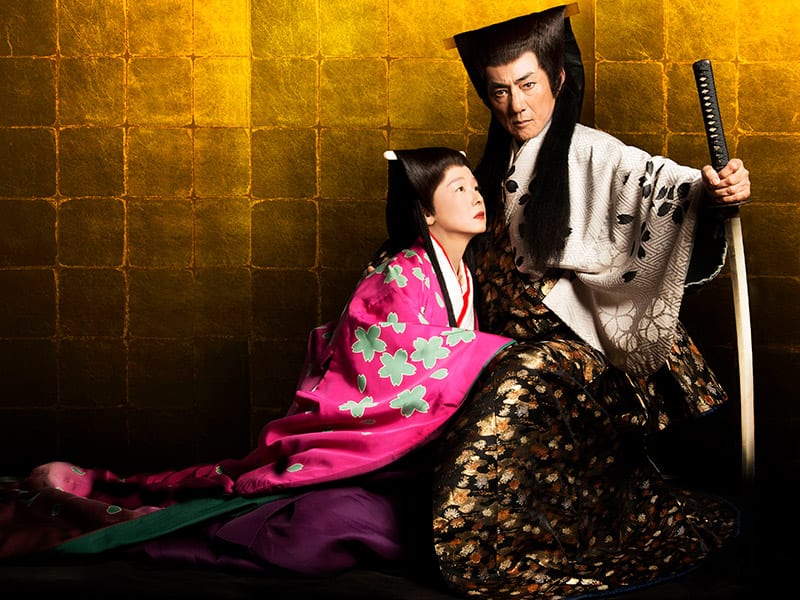"Voodoo" Macbeth? Heir apparent of the Denmark Corporation in Manhattan (Hamlet 2000)? A pair of star-crossed lovers from feuding families who own competing food stalls in Singapore (Chicken Rice War). In the centuries since William Shakespeare's death, numerous stage and, more recently, film and television adaptations of his work have emerged to inspire, comfort, and provoke audiences in far-flung corners of the globe. As early as 1619, for example, Hamlet was performed in colonial Indonesia to entertain European expatriates. In 1845, U.S. Army officers staged Othello in Corpus Christi, Texas, as a distraction from the run-up to the Mexican-American War. Supported by the National Endowment for the Arts, the Alabama Shakespeare Festival toured its production of Macbeth to several key U.S. military bases in 2004.
The gender roles have also been taken for a spin, notably in Phyllida Lloyd's all-female production of Julius Caesar and Henry IV (Donmar Warehouse, London, 2012 and 2014). Set in a women's prison, the cross-gender performance stirred heated discussions. Meanwhile, rehearsing The Comedy of Errors in Kabul and eventually performingat the Globe Theatre in London during the 2012 Olympics helped the Roy-e-Sabs Company cope with persecution from the Talibans and take shelter from harsh Afghan politics.
Shakespeare's global popularity—connecting audiences across time as well as geography—is paralleled by the diverse settings of his plays, which often take place outside England, Scotland, and Wales in locations like Athens, Elsinore, Illyria, Troy, Cyprus, Cairo, Tunis, Bohemia, Verona, and Venice. And many of his characters hail from various parts of the world, whether it's The Merchant of Venice's Prince of Morocco or the Indian pageboy from A Midsummer Night's Dream, in which, when Peter Quince sees Bottom turned into an ass-headed figure, he cries in horror: "Bless thee, Bottom, bless thee. Thou art translated!" Other characters in the play use the verb in similar ways to refer to a broad range of altered states: With the help of a love potion, Helena hopes to be "translated" into Hermia, her childhood friend-turned-rival.
With more than four billion copies of his works sold, Shakespeare is one of the most translated secular authors in the world.
Appropriately enough, translation has become a crucial element of Shakespeare's global legacy. On one hand, the formal features of his poetry may seem difficult to translate across languages. On the other hand, Shakespeare's oeuvre is greater than just words. What has captivated audiences for centuries is his larger-than-life portrayal of philosophical questions that resonate across the spectrum of humanity. Since the 16th century, his plays and sonnets have been translated and performed all over the world in an ever-growing number of languages, dialects, and styles. With more than four billion copies of his works sold, Shakespeare is one of the most translated secular authors in the world. In the past fifty years, perhaps as part of post–Cold War campaigns for soft power, arts festivals and directors in many countries have presented Shakespeare's plays as part of their quest for cosmopolitanism.
Japanese director Yukio Ninagawa (1935–2016) emerged in this context. He is one of the few people in the world to have directed all 37 of Shakespeare's plays, a task he began in 1997 as the artistic director of the prestigious Sai-no-kuni Shakespeare series. (He directed Hamlet, a play that has had over a hundred different translations in Japanese, six times). And he presented the plays in Japanese, not only by translating the texts but also by translating cultural and aesthetic references. He also directed English-language productions of Shakespeare in London, including King Lear, starring Sir Nigel Hawthorne. In 1980, his production of Macbeth, which has become a landmark production in world theater, premiered at Tokyo's prestigious Nissei Theatre before touring globally. The venue carries historical significance because it also hosted the Royal Shakespeare Company's 1973 production of A Midsummer Night's Dream, directed by Peter Brook, when Ninagawa was just beginning to work with European and American dramas. Brook's production—which has been described as one of the 20th century's most influential productions of Shakespeare—prompted Ninagawa to take an even more remarkably auteurist approach to stage work. Like Brook, who regarded theater as iconographic art, and filmmaker Akira Kurosawa, who combined Noh, American Western, and Japanese scroll painting in his Throne of Blood (an adaptation of Macbeth), Ninagawa often worked from a set of compelling images for each production as if he were a designer.
Ninagawa's Macbeth earned the nickname "the cherry blossom Macbeth" for the visual motif that dominates the production. Inspired by the Japanese author Motojirō Kajii's (1901–1932) widely circulated phrase "Dead bodies are buried under the cherry trees," Ninagawa's Macbeth associates death with a cherry tree in full blossom, symbolizing both beauty and mortality, and the repose of the soul. A cherry tree and its falling petals adorn many of the key scenes in the play, providing an uncanny link between extreme forms of violence and beauty. Shifting moods and emotions are marked by changes in season, and the color and motif of cherry blossoms appear on the panels upstage, on the costumes of Macbeth and Lady Macbeth, and in the lighting scheme. Spring turns to autumn as Macbeth wades through blood in his campaign for power. In the prophesied movement of "Great Birnam Wood to high Dunsinane Hill," soldiers carry boughs of cherry trees in place of Shakespeare's original oak. The swaying boughs—replete with literary associations with religious sacrifice—threaten Macbeth with death, if not hara-kiri (honorable samurai-style suicide), and remind the audience of the transient world and a Buddhist sense of resignation. The ideas of impermanence and an inevitable fall are ingrained in the highest ideal of a samurai, which is why the falling cherry blossoms provide such a compelling subtext.
An eclectic mix of music from different eras and cultures echoes Ninagawa's hybrid visual strategies, with the use of both Christian music and Japanese gongs signaling a world elsewhere. The opening scene features temple bells and the Fauré Requiem, and a lone flute later accentuates Macbeth's action as he persuades assassins to go after Banquo. This arrangement gives the production a religious undertone, while also highlighting the story's pathos. Fauré's gentle and shimmering Sanctus echoes Ninagawa's visual cherry blossom motif, and the director's own rehearsal notes usefully sum up the significance of the dominant visual and sonic frameworks: "Memories of cherry blossom at night [morph into] a sensuous invitation to death."
Ninagawa's Macbeth has been understood by Japanese and international audiences alternately as an exercise in visual delights; a fantasy of pure Japan-ness (the cherry blossoms); a samurai story infused with Buddhist rituals; a stage work with cinematic qualities inspired by Kurosawa; an innovative Kabuki performance; a relatively conservative interpretation of the unspecified "universality" of Macbeth; a self-serving and self-Orientalizing production that appropriates detached local traditions; and, sometimes, all of the above. Along with other translated versions of Shakespeare's plays on the global stage, it creates a space for imagination that is neither here nor there, taking audiences, as The Winter's Tale's Camillo puts it, "to unpath'd waters, undream'd shores."
First published in New York Lincoln Center's The Score: An Insider's Guide to the Performing Arts
https://www.lincolncenter.org/article/shakespeare-in-the-world

